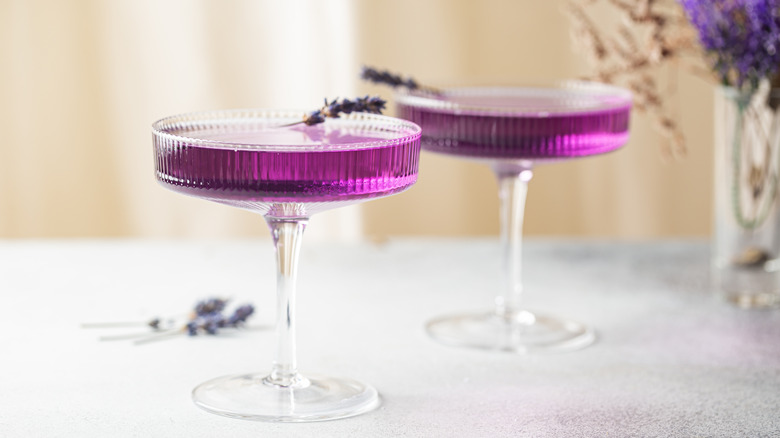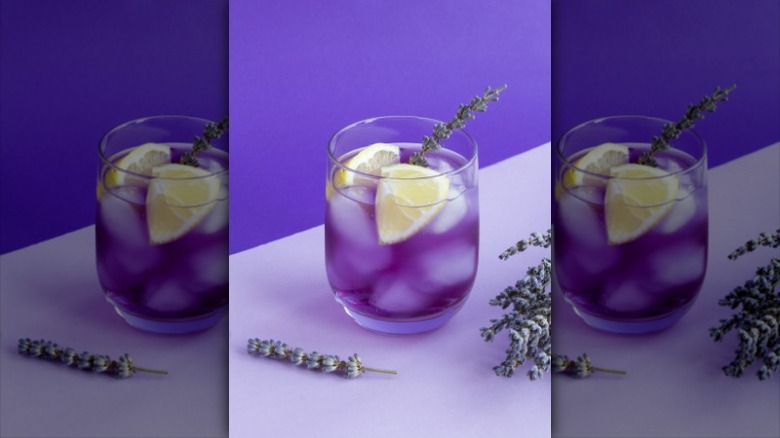What Makes Empress Gin Cocktails So Colorful?
Travelers from across the globe glide into the Inner Harbor of Victoria, British Columbia, on Vancouver Island, drawn immediately to the iconic Fairmont Empress Hotel as it comes into view. The impressive structure has served as a historic hallmark of "The City of Gardens" for well over a hundred years. It's fitting that a gin called Empress 1908, named for the year the hotel was born, presents with a burst of vibrant color and floral notes — especially when you understand where that color comes from.
The vibrant crimson and indigo hues of the two Empress 1908 gins — the newest Elderflower Rose Gin and the original Indigo Gin — come not from added artificial dyes or colors but straight from natural botanical elements. It's a nod to Vancouver Island's nearly year-round blossoms defining the landscape, but also to the concept of flavoring and coloring spirits with the attributes of Mother Nature — something that's increasingly shared by other spirit purveyors on varying levels.
The Elderflower Rose looks exactly like its name, a deep ruby-toned liquid created with nine botanics for flavor and two defining elements for color. The first is red rose petals and the other is black carrot, which is added post-distillation and imparts a rich purplish color from inherent anthocyanin antioxidants. Together with juniper berries, elderflowers, orange peel, lavender, and other botanicals, they make a magic crimson liquid with a floral bouquet, slightly sweet undertones, and crisp orange citrus notes. These elements provide a colorful base for exploring nuanced flavor combinations.
Coloring the original Empress Indigo Gin
While cocktails made with the Elderflower Rose Gin feature rich crimson colors, the original indigo Empress 1908 gin presents soothing bluish-purple tones — again, derived from natural botanics. The concept for this gin sprang from the Fairmont Empress Hotel's afternoon tea ritual, with the gin creators zeroing in on the Blue Suede Shoes tea blend featuring butterfly pea blossoms. As such, the gin also offers a surprise visual element for any cocktail made with it.
Butterfly pea blossoms are well known for color-changing attributes, meaning that the indigo color will change depending on the mixer you add to the cocktail. For example, adding lemon or another citrus juice sets off a chain reaction by altering the pH balance of the gin. You'll see color changes magically appear in the glass, ranging from shades of purple to soft pinks or even fuchsia. Adding fizzy elements such as tonic water or seltzer invoke a similar response. Of course, this isn't unique to Empress Indigo Gin — you can always DIY a cocktail or mocktail with this effect by purchasing butterfly pea flowers online and adding them into your own custom recipes.
Besides butterfly pea blossoms, Empress Indigo Gin harbors seven other botanicals, including juniper berries, rose petals, grapefruit peels, and black tea. The result is a riot of natural flavors ranging from fruity to floral, with touches of citrus, pine, and oak. With herbal tones, deep natural color, and light mouthfeels, making an Empress gin cocktail becomes an edible art form.

